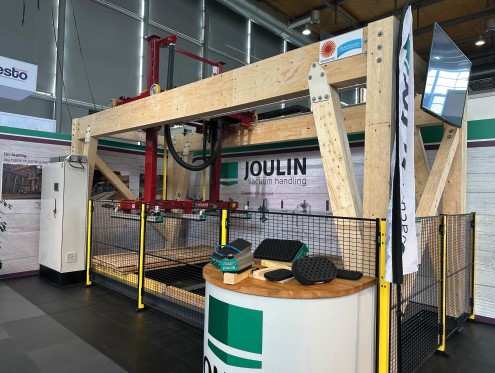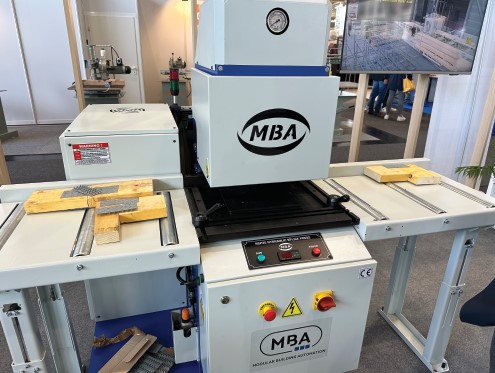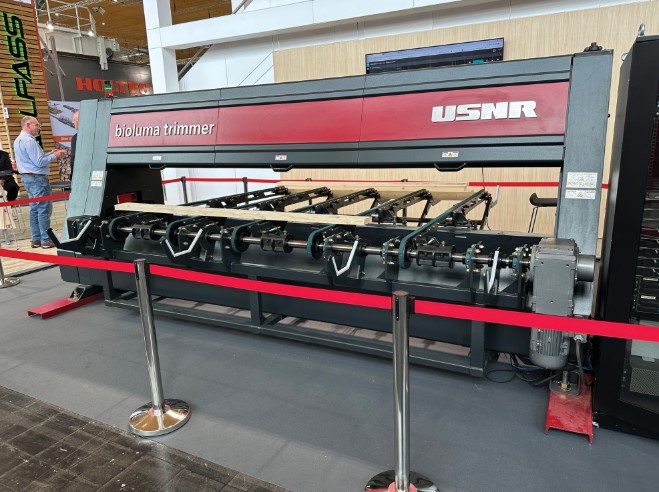How Do You Want Your Change?
Innovation may come to the component manufacturing industry in different ways
What is innovation? If you were to ask twenty people off the street to define innovation, you would probably receive twenty different answers. Some answers would be innovative, and others not so much.
Similarly, if you were to ask twenty component manufacturers (CMs) the same question, I’m almost certain you would receive 20, maybe even 25, different answers. The one thing all the CMs would agree on is that our industry needs more innovation. But do CMs really want innovation? I spend a lot of time asking myself that question and as I ponder the concept, I dive further into the notion of “innovation.” I like to apply difficult concepts to visual models to help me understand them and, as such, a continuum of innovation helps me decipher what CMs may want in the form of innovation.
Incremental or Radical?
On one end, there is incremental innovation. It occurs over time with small improvements that add up to significant change. Think of how trusses were built thirty years ago compared to how they are built today. The end results are the same, albeit with more profiles in a typical structure, but the process is significantly different when observed from start to finish compared to back then. This type of slow-moving change is relatively easy for the industry to digest and protects established investments and sunk costs.
At the other end of the continuum is radical innovation. This happens rapidly, completely changing the competitive landscape in most industries. In our realm, think of a substitute for lumber or truss plates. Better yet, think of a substitute for components themselves that offers more efficient structural solutions than roof trusses, floor trusses, or wall panels. Do CMs want and welcome this type of innovation? Some might, but I doubt many would be able to divest their current processes and reinvest in new technologies in the timeline that this new innovation would require to be adopted by the markets.
If I scared you with that last paragraph, rest easy. When you look at the history of the construction industry, specifically in North America, as it relates to single family and multi-family home construction over the last several decades, the overwhelming totality of innovation has been incremental, and there are a number of barriers in place to suggest that future innovation will continue to remain that way.
 The European wood trade show LIGNA showcased several automation ideas.
The European wood trade show LIGNA showcased several automation ideas.
Being More Inclusive
Innovation is an important concept to SBCA. It is one of our three strategic pillars (see SBCA’s 2023-2027 Strategic Plan at sbcacomponents.com) and shows the importance our members and association place on innovation as we fulfill SBCA’s vision: “The building industry will use high quality building components provided by SBCA member companies.” CMs have always been an innovative group. We were one of the earliest adopters of technology among the construction supply chain and trades, utilizing 3D design layout programs derived from hand drawn plans and employing automated saws and jigging systems while others leaned on manual, field-driven processes.
However, that is clearly not enough. Many CMs I talk with indicate there are efficiencies to be gained with continued advancements in software, machinery, and manufacturing processes. SBCA’s Innovation Grant solicited entries from a number of companies, and the submissions reflect a number of efforts throughout the supply chain to drive our industry forward. We received a colossal amount of interest from companies attempting to address issues throughout the manufacturing process. Hopefully, this is a forward-looking indicator of how SBCA can continue to foster innovation and engrain it into our association’s culture.
However, we need to look beyond our industry if we truly want to advance innovation among component manufacturers. Innovations from adjacent industries can be adapted to CMs’ operations. One needs to look no further than the progress made in the modular manufacturing sector. As people search for solutions to our country’s housing needs, many are looking for modular solutions. Similarly, as mass timber gains ground in Europe, North American CLT manufacturers are also making headway displacing traditional concrete and steel applications. A little closer to home, we see the emergence of off-site construction and the approach to a “total structure” structural framed solution.
 LIGNA focused on wood-based applications including truss-specific solutions.
LIGNA focused on wood-based applications including truss-specific solutions.
What do all three of those solutions have in common? They all utilize wood, but they are all looking to disrupt the component industry, even in a small way. Like incremental innovations, small disruptions have a way of adding up into significant displacements. One of the best things the component manufacturing industry can do is benchmark against those industries and see what it can utilize and adapt for its own benefit.
Collectively, modular, CLT, and off-site construction have only a fractional market share despite being hot button topics at conferences and conventions. Why are under-utilized solutions the topic of conversation when people gather to talk construction? Because they are novel and represent an emerging opportunity, which typically translates into sales opportunities for machinery manufacturers, consultants, and other suppliers. But let’s be honest: they’ve also done a better job with their messaging.
Casting a Wider Net
Traditionally, CMs have provided a service and solution based on the needs of their customers and haven’t had a reason to convey the benefits of the products or how they provide value. As a result, CMs have developed an incumbent mentality that has likely hindered broader innovation. If we truly want to embrace innovation and solicit help from outside of our immediate industry, we need to improve our ability to articulate exactly what it is that we do and the value we provide to the market. Once we start to communicate this to the broader industry, we can articulate our needs and opportunities for innovation to those who currently don’t know enough to generate meaningful solutions.
For instance, SBCA currently doesn’t have sufficient relationships with colleges and universities. This cohort has largely been underrepresented in the groups SBCA has interactions with, but this is a group that could make a big impact if we start developing these contacts now. Why? Because each year, countless innovations come out of America’s colleges and universities. If SBCA can communicate the needs and problems our CMs are dealing with to these groups, there’s a higher likelihood of finding a solution to address them.
 Innovative ideas can impact any aspect of our industry, from software to production to material handling.
Innovative ideas can impact any aspect of our industry, from software to production to material handling.
College age kids think differently and, in this case, that’s an advantage. They haven’t looked at component manufacturing through the same lens as those of us who have been in the industry 10, 20, or even 30 years. Young professionals entering the workforce in the next five years grew up with advantages we never had. They haven’t lived in a world without the internet. They’ve also participated in robotics clubs and STEM competitions as adolescents.
These are the minds we need to tap into in order to continue our drive for innovation in the component industry. As SBCA reaches out and establishes relationships with colleges and universities that have construction, wood products, robotics, and entrepreneurship programs, we’ll be able to further advance our culture of innovation and hopefully learn as much as we teach these groups.
SBCA can also focus its search for innovation on other continents. Europe and Australia employ many similar construction techniques but have long lived with labor constraints that are just now becoming the norm in North America. SBCA has highlighted lessons learned from two CMs’ visit to Australia (see SBCA Magazine August 2019), while Europe is home to many automated wood products solutions.
I recently attended LIGNA in Hannover, Germany to check out the advancements in wood products technologies. LIGNA provided insight into the totality of the wood products ecosystem. I saw impressive machinery tasked with taking down trees to form logs with pinpoint accuracy and learned about processes that utilize wood waste to create steam to power buildings and pellets to heat them. In between those two ends of the wood products cycle were vast amounts of robotics to grade and sort lumber, cut and mill lumber, and stack and organize finished goods. How much of this was specifically related to building trusses and wall panels? Not a lot. However, that doesn’t mean that the technology, tooling, or mechanics couldn’t be adapted to drive innovation in the component industry.
 Innovation can affect processes outside of manufacturing like this scanning solution from Dietrich's.
Innovation can affect processes outside of manufacturing like this scanning solution from Dietrich's.
At LIGNA, I watched dozens of robotic applications handle wood parts that will drive improvements in material handling. Several exhibitors displayed ways of joining multiple pieces of wood together for the purpose of appearance and strength. I recognized many names familiar to our industry that are already working to drive our industry forward, and I also made a list of unfamiliar names that might provide future solutions to our members. While in different conversations I heard pessimistic attitudes about how European approaches can’t be applied to North American markets because of the quality of wood, or the additional expense of products, the fear of adoption of the supply chain, and automation in general, many of those concerns can be overcome with creativity and a desire to improve innovation. This is one of our primary goals at SBCA.
Years’ Worth of Work
How does SBCA represent potential applications from adjacent industries, institutions, and geographies to its constituents in hopes of driving innovation? It will require a lot of work by all parties to explore and dissect the possibilities when meeting with various people and visiting various places. I’m reminded of Cal Juriet devising the truss plate while sitting in church one Sunday morning (see SBCA Magazine, March/April 2022). While that one “ah-ha” moment came at a time of worship, it was the culmination of years’ worth of work, driving innovation and learning about others’ capabilities in the market. When will the component industry have another ah-ha moment that drives radical innovation, or even the next incremental innovation? We don’t know, but SBCA will do all it can to help foster an environment that brings it about.
Jess Lohse, Executive Director

